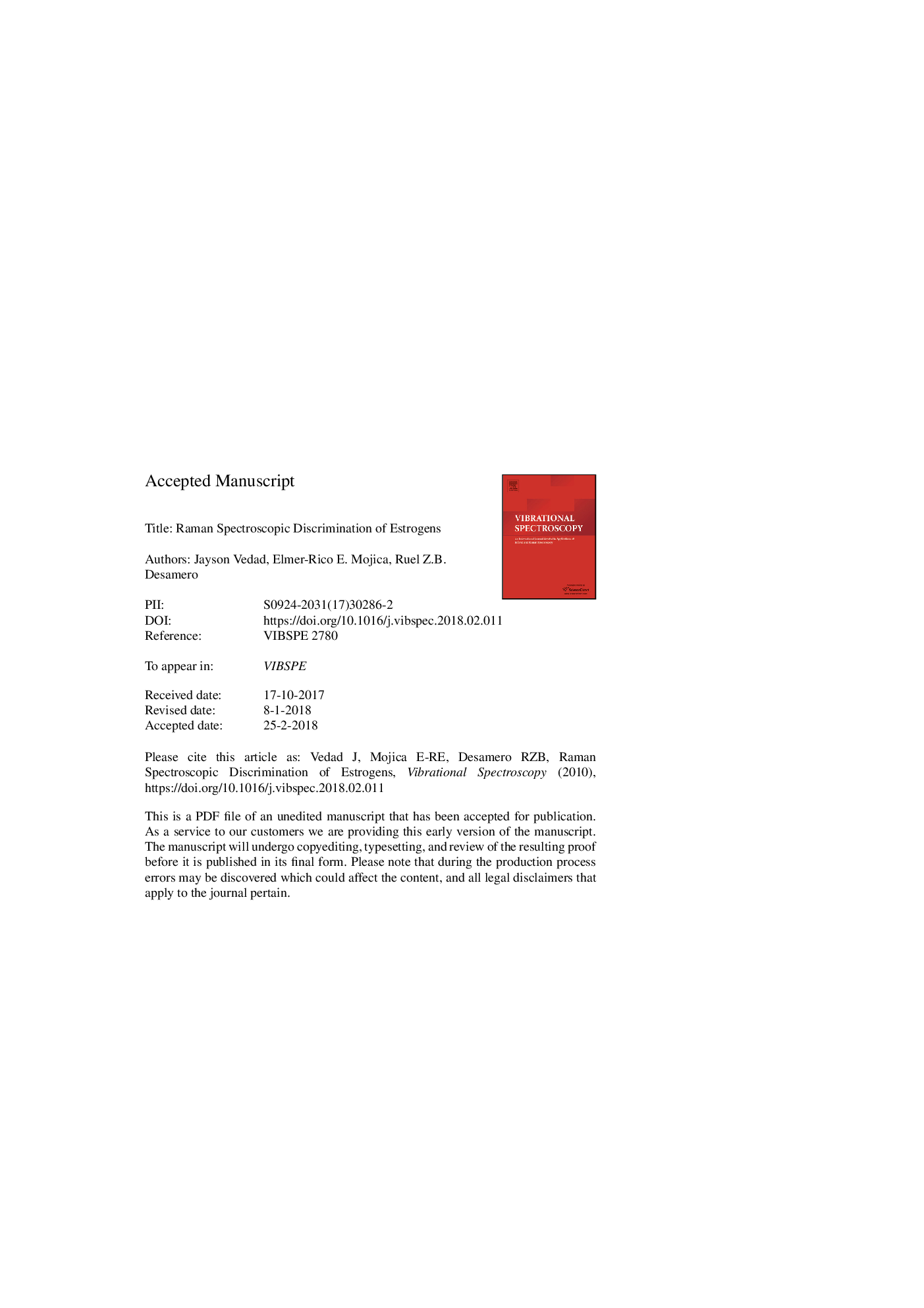| Article ID | Journal | Published Year | Pages | File Type |
|---|---|---|---|---|
| 7690811 | Vibrational Spectroscopy | 2018 | 26 Pages |
Abstract
Estrogens are a group of steroid compounds found in the human body that are eventually discharged and ultimately end up in sewer effluents. Since these compounds can potentially affect the endocrine system its detection and quantification in sewer water is important. In this study, estrogens such as estrone (E1), estradiol (E2), estriol (E3), and ethynylestradiol (EE2) were discriminated and quantitated using Raman spectroscopy. Simulated Raman spectra were correlated with experimental data to identify unique marker peaks, which proved to be useful in differentiating each estrogen molecules. Among these marker peaks are Raman modes arising from hydroxyl groups of the estrogen molecules in the spectral region 3200-3700â¯cmâ1. Other Raman modes unique to each of the estrogen samples were also identified, including peaks at 1722â¯cmâ1 for E1 and 2109â¯cmâ1 for EE2, which corresponds to their distinctive structures each containing a different set of functional groups. To quantify the components of estrogen mixtures, the intensities of each identifying Raman bands, at 581â¯cmâ1 for E1, 546â¯cmâ1 for E2, 762â¯cmâ1 for E3 and 597â¯cmâ1 for EE2, were compared and normalized against the intensity of a common peak at 783â¯cmâ1. Quantitative analysis yielded most results within an acceptable 20% error.
Keywords
Related Topics
Physical Sciences and Engineering
Chemistry
Analytical Chemistry
Authors
Jayson Vedad, Elmer-Rico E. Mojica, Ruel Z.B. Desamero,
